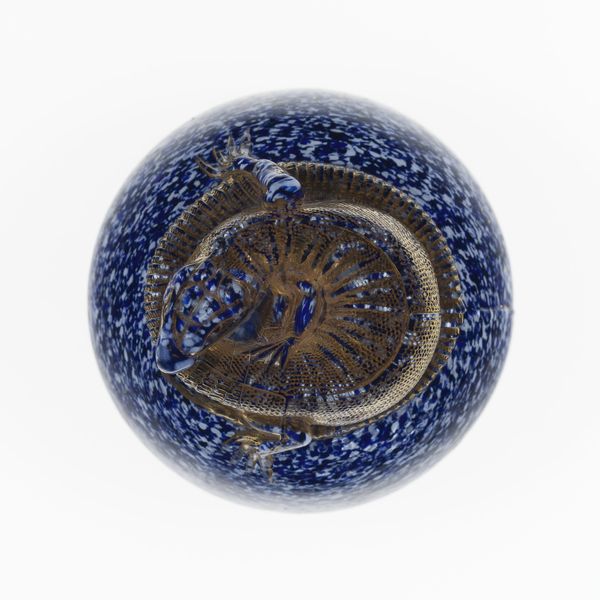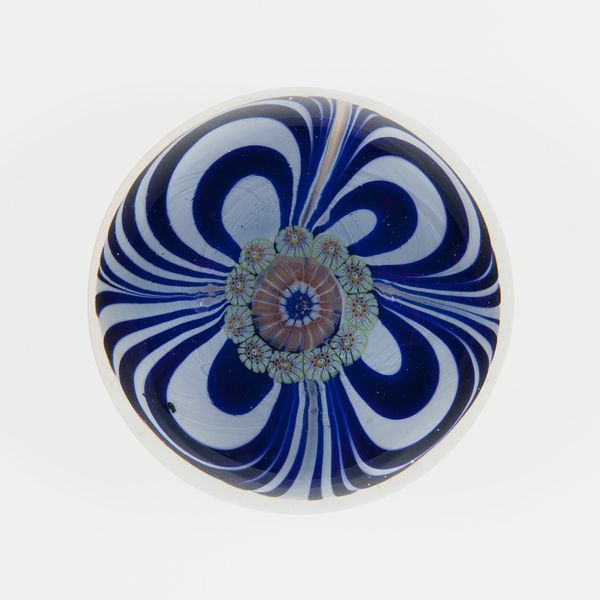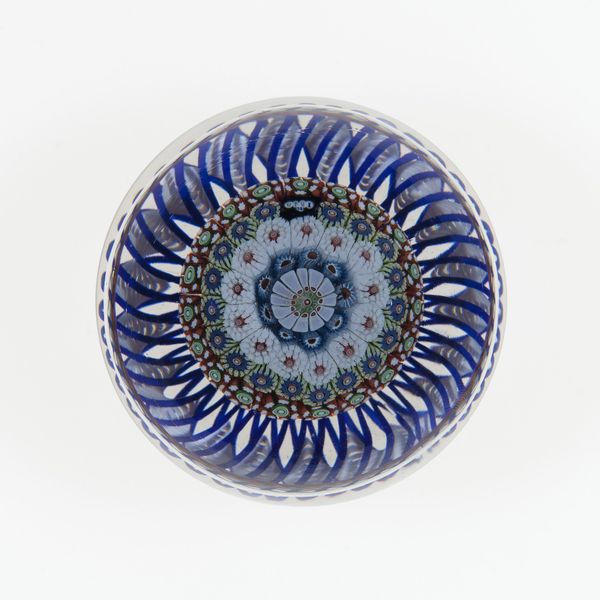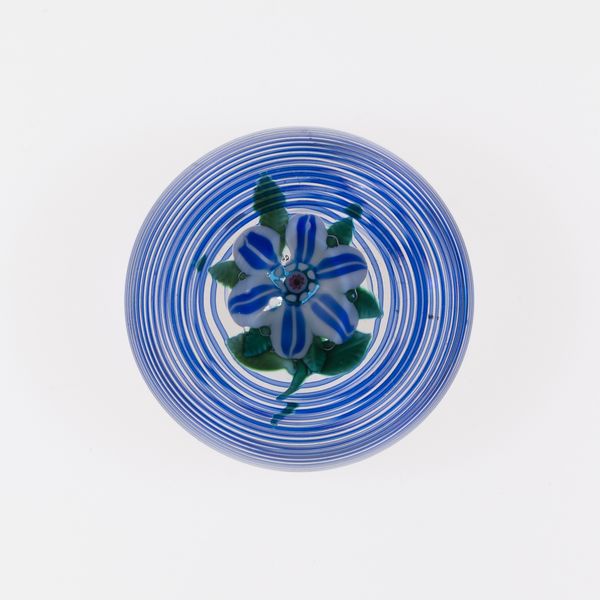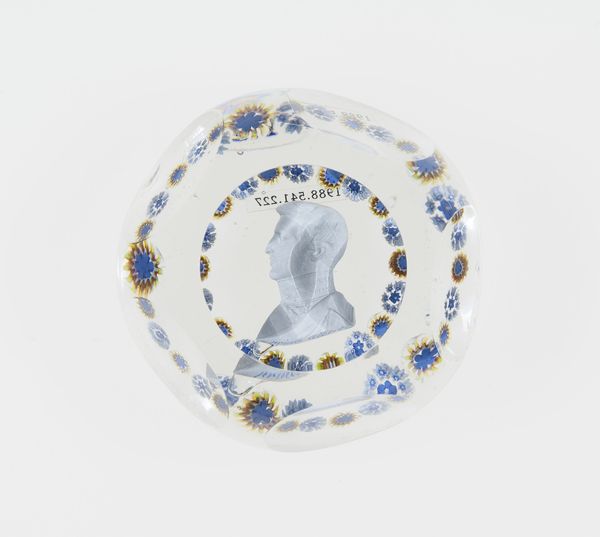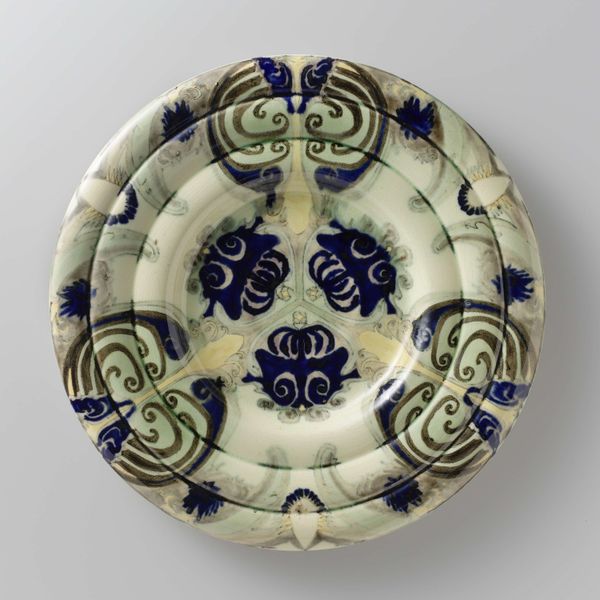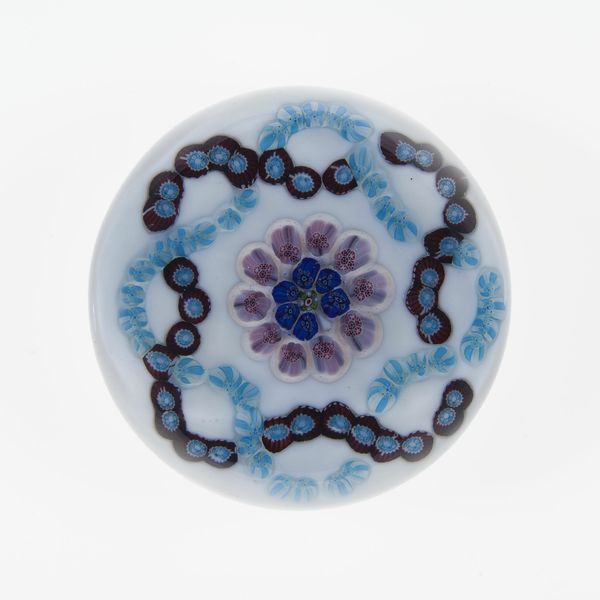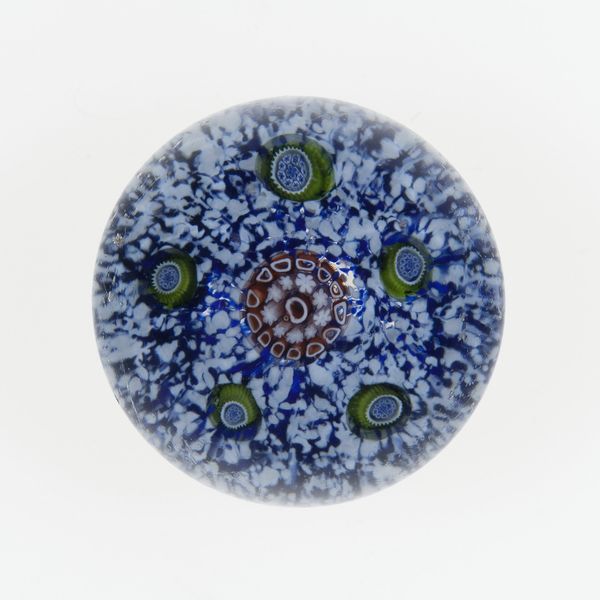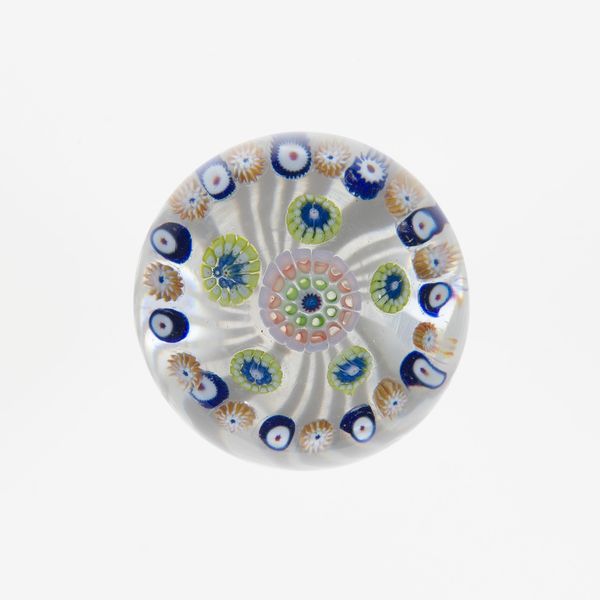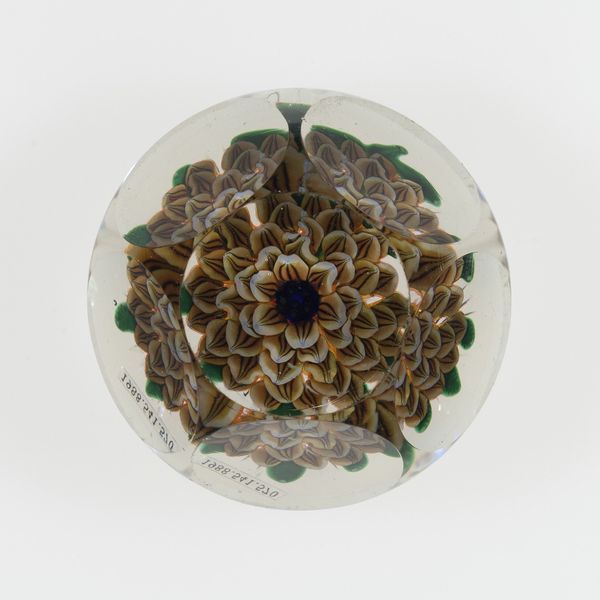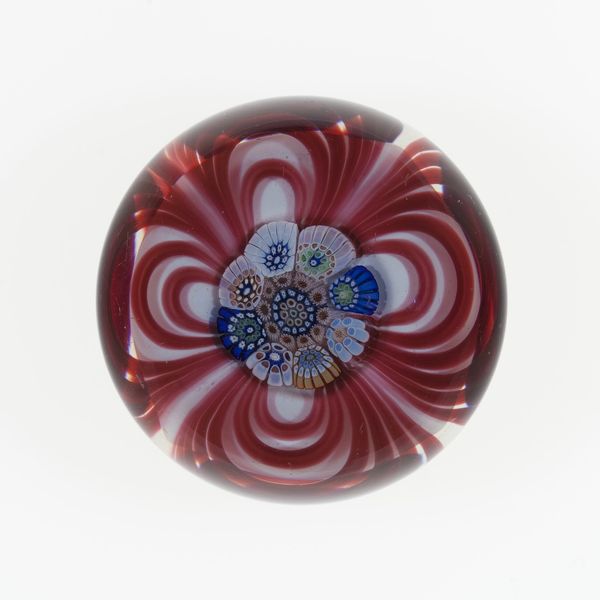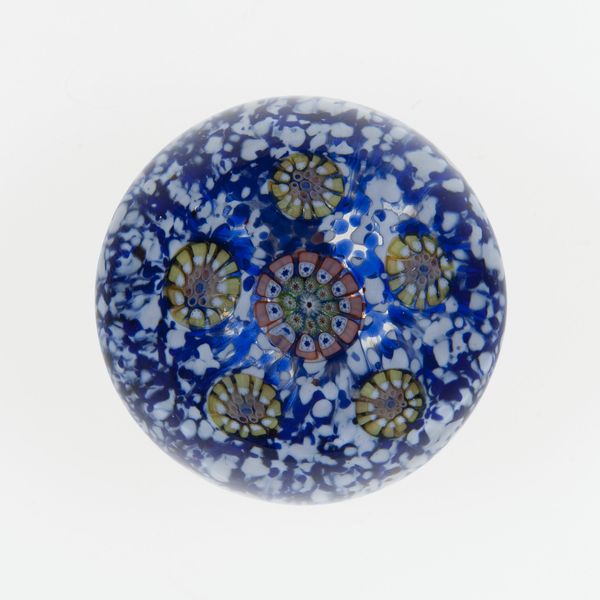
Dimensions: Diam. 8.2 cm (3 1/4 in.)
Copyright: Public Domain
The Compagnie de Saint Louis made this glass paperweight, with a lizard encased within it. The swirls of blue and white glass create a mesmerizing backdrop for this creature, making it a striking, and useful object. Glass paperweights like this one became popular in the mid-19th century, particularly in France. The rise of industrialization had created a new middle class with money to spend, and they were eager to buy decorative objects for their homes and offices. Companies like the Compagnie de Saint Louis were quick to capitalize on this trend, producing paperweights in a variety of styles and designs. The choice of a lizard as the central motif speaks to the Victorian fascination with natural history. Displaying such an object signaled to the world that the owner was educated, cultured, and up-to-date with the latest scientific discoveries. Understanding the context in which this paperweight was made helps us to appreciate its significance as a cultural artifact. By researching the history of glassmaking, the rise of the middle class, and the Victorian interest in natural history, we can gain a deeper understanding of the social forces that shaped its creation.
Comments
No comments
Be the first to comment and join the conversation on the ultimate creative platform.
